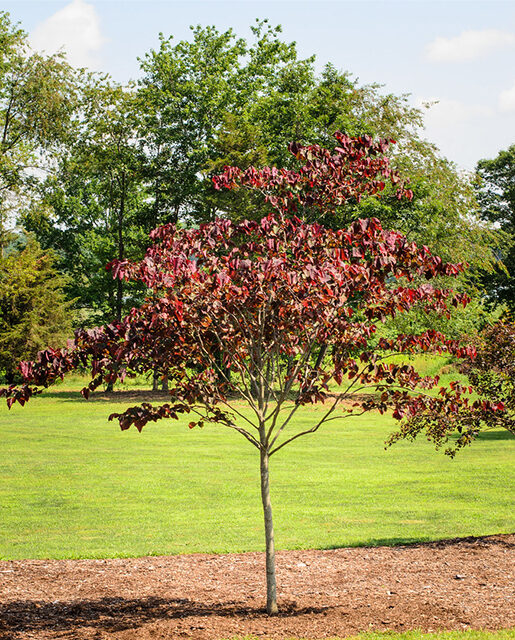Cercis canadensis L.
The eastern redbud is most well known for its beautiful magenta springtime blooms.
Location
Today, the Arboretum hosts a couple of eastern redbuds. Try to spot them by starting at the corner of May and Lovell streets and walking into the Arboretum along the East-west trail.


History at Hadwen
There are no records of Hadwen planting any eastern redbud, nor was it recorded in the preliminary report on trees in the Arboretum in 1971. This is likely due to the plant originating in Texas in the 1960s. In 1900, Hadwen lectured on the increasing variety of ornamental trees that thrive in Worcester, and wrote that this meant there were “quite enough to embellish rural homes with a most agreeable and pleasing variety.”
Keep Learning
Detailed Species Information
Eastern redbud is a large, deciduous shrub in the family Fabaceae and is widely distributed across the southeastern United States. Typically, the eastern redbud grows to 20–30 feet (6–9 meters) tall with a short, twisted truck and wide crown. The leaves of the tree are alternately arranged and heart-shaped with a paperlike texture. The attention-grabbing flowers are typically a brilliant shade of magenta appearing in large clusters of small flowers in late spring and early summer. Because of the shape of these flowers, they are exclusively pollinated by long-tongued bees such as blueberry bees and carpenter bees. The reddish bark is usually a scaly texture.
The eastern redbud thrives in moist climates and cannot grow in arid areas. It is typically found growing in the understories of mixed forests within its native range. Because of the eastern redbuds’ beautiful blooms, it is widely used in landscaping with a variety of cultivars available. In parts of the United States, various parts of the tree are also eaten, including the flowers, which can be consumed raw or fried.
